Related Research Articles
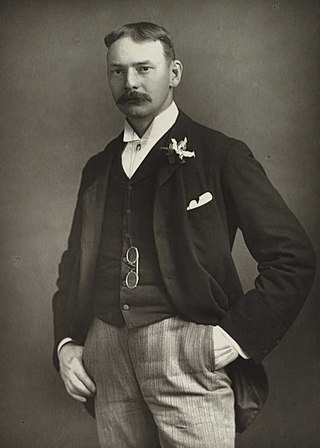
Jerome Klapka Jerome was an English writer and humourist, best known for the comic travelogue Three Men in a Boat (1889). Other works include the essay collections Idle Thoughts of an Idle Fellow (1886) and Second Thoughts of an Idle Fellow; Three Men on the Bummel, a sequel to Three Men in a Boat; and several other novels. Jerome was born in Walsall, England, and, although he was able to attend grammar school, his family suffered from poverty at times, as did he as a young man trying to earn a living in various occupations. In his twenties, he was able to publish some work, and success followed. He married in 1888, and the honeymoon was spent on a boat on the Thames; he published Three Men in a Boat soon afterwards. He continued to write fiction, non-fiction and plays over the next few decades, though never with the same level of success.

Arthur Machen was the pen-name of Arthur Llewellyn Jones, a Welsh author and mystic of the 1890s and early 20th century. He is best known for his influential supernatural, fantasy, and horror fiction. His novella The Great God Pan has garnered a reputation as a classic of horror, with Stephen King describing it as "Maybe the best [horror story] in the English language." He is also well known for "The Bowmen", a short story that was widely read as fact, creating the legend of the Angels of Mons.

Robert William Chambers was an American artist and fiction writer, best known for his book of short stories titled The King in Yellow, published in 1895.
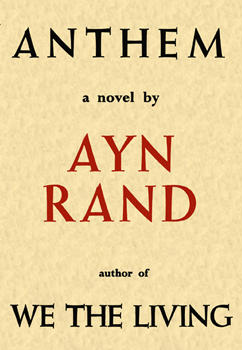
Anthem is a dystopian fiction novella by Russian-American writer Ayn Rand, written in 1937 and first published in 1938 in the United Kingdom. The story takes place at an unspecified future date when mankind has entered another Dark Age. Technological advancement is now carefully planned and the concept of individuality has been eliminated. A young man known as Equality 7-2521 rebels by doing secret scientific research. When his activity is discovered, he flees into the wilderness with the girl he loves. Together they plan to establish a new society based on rediscovered individualism.

William Howard Gass was an American novelist, short story writer, essayist, critic, and philosophy professor. He wrote three novels, three collections of short stories, a collection of novellas, and seven volumes of essays, three of which won National Book Critics Circle Award prizes and one of which, A Temple of Texts (2006), won the Truman Capote Award for Literary Criticism. His 1995 novel The Tunnel received the American Book Award. His 2013 novel Middle C won the 2015 William Dean Howells Medal.

The Big Four is a work of detective fiction by Agatha Christie, first published in the UK by William Collins & Sons on 27 January 1927 and in the US by Dodd, Mead and Company later in the same year. It features Hercule Poirot, Arthur Hastings, and Inspector Japp. The UK edition retailed at seven shillings and sixpence (7/6) and the US edition at $2.00.
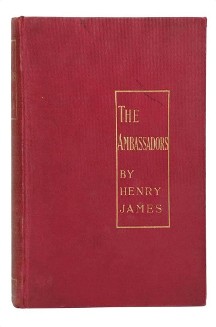
The Ambassadors is a 1903 novel by Henry James, originally published as a serial in the North American Review (NAR). The novel is a dark comedy which follows the trip of protagonist Lewis Lambert Strether to Europe to bring the son of his widowed fiancée back to the family business. The novel is written in the third-person narrative from Strether's point of view.
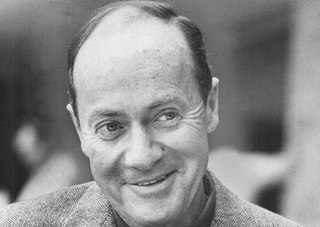
Ross Macdonald was the main pseudonym used by the American-Canadian writer of crime fiction Kenneth Millar. He is best known for his series of hardboiled novels set in Southern California and featuring private detective Lew Archer. Since the 1970s, Macdonald's works have received attention in academic circles for their psychological depth, sense of place, use of language, sophisticated imagery and integration of philosophy into genre fiction.
Geoffrey Donald Page is an Australian poet, translator, teacher and jazz enthusiast.

Ernest Kellogg Gann was an American aviator, author, sailor, and conservationist. He is best known for his novels and memoirs about early aviation and nautical adventures. Some of his more famous aviation novels include The High and the Mighty and Island in the Sky, both of which were turned into Hollywood movies starring John Wayne. Gann's classic memoir of early commercial aviation, Fate Is the Hunter, is still in print today and considered by many one of the greatest aviation books ever written. Some of Gann's nautical-themed novels include Fiddler's Green and Soldier of Fortune, which were also turned into major motion pictures.

Ashenden: Or the British Agent is a 1927 collection of loosely linked stories by W. Somerset Maugham. It is partly based on the author's experience as a member of British Intelligence in Europe during the First World War.

Invasion literature is a literary genre that was popular in the period between 1871 and the First World War (1914–1918). The invasion novel first was recognized as a literary genre in the UK, with the novella The Battle of Dorking: Reminiscences of a Volunteer (1871), an account of a German invasion of England, which, in the Western world, aroused the national imaginations and anxieties about hypothetical invasions by foreign powers; by 1914 the genre of invasion literature comprised more than 400 novels and stories.

Island in the Sky is a 1953 American aviation adventure drama film written by Ernest K. Gann based on his 1944 novel of the same name, directed by William A. Wellman and starring and coproduced by John Wayne. Because of its realistic depiction of an actual aircraft crash, some consider the film as among the classic aviation films. The film also features Andy Devine, Lloyd Nolan, James Arness and Paul Fix.

Secret passages, also commonly referred to as hidden passages or secret tunnels, are hidden routes used for stealthy travel, escape, or movement of people and goods. They are sometimes inside buildings leading to secret rooms.
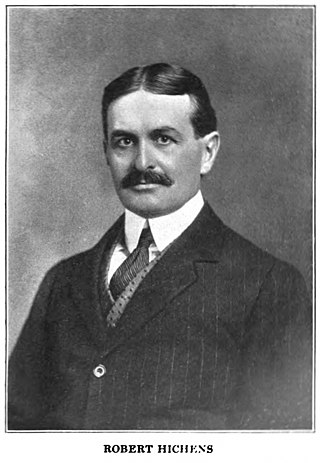
Robert Hichens was an English journalist, novelist, music lyricist, short story writer, music critic and collaborated on successful plays. He is best remembered as a satirist of the "Naughty Nineties".
"I, Robot" is an episode of the original The Outer Limits television show. It first aired on 14 November 1964, during the second season. It was remade under the same title in 1995. Leonard Nimoy appeared in both versions.
William Delbert Gann or WD Gann, was a finance trader who developed the technical analysis methods like the Gann angles and the Master Charts, where the latter is a collective name for his various tools like the Spiral Chart, the Hexagon Chart, and the Circle of 360. Gann's market forecasting methods are purportedly based on geometry, astronomy, astrology, and ancient mathematics. Opinions are sharply divided on the value and relevance of his work. Gann authored a number of books and courses on shares and commodities trading.
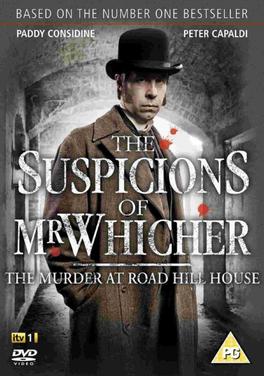
The Suspicions of Mr Whicher is a British series of television films made by Hat Trick Productions for ITV, written by Helen Edmundson and Neil McKay. It stars Paddy Considine in the title role of detective inspector Jack Whicher of the Metropolitan Police. The first film, The Murder at Road Hill House, was based on the real-life Constance Kent murder case of 1860, as interpreted by Kate Summerscale in her 2008 book The Suspicions of Mr Whicher or The Murder at Road Hill House, which was the winner of Britain's Samuel Johnson Prize for Non-Fiction in 2008, and was read as BBC Radio 4's Book of the Week in April the same year.

All the King's Men is a 1946 novel by Robert Penn Warren. The novel tells the story of charismatic populist governor Willie Stark and his political machinations in the Depression-era Deep South. It was inspired by the real-life story of U.S. Senator Huey P. Long, who was assassinated in 1935. Its title is drawn from the nursery rhyme "Humpty Dumpty."

All the Light We Cannot See is a 2014 war novel by American author Anthony Doerr. The novel is set during World War II and centers around the characters Marie-Laure Leblanc, a blind French girl who takes refuge in her uncle's house in Saint-Malo after Paris is invaded by Nazi Germany, and Werner Pfennig, a bright German boy who is accepted into a military school because of his skills in radio technology, before being sent to the military. The novel is written in a lyrical style, and almost all of the chapters alternate between Marie-Laure's and Werner's stories, which parallel each other. The narrative has a nonlinear structure, flashing between the Battle of Saint-Malo and the events leading up to it. The story has ethical themes such as the dangers of greed and the nature of sacrifice, and portrays Doerr's fascination with science and nature.
References
- ↑ Gann, William Delbert (1927). The Tunnel Thru the Air; Or, Looking Back from 1940. New York, NY: Financial Guardian Publishing Company.
- ↑ Novak-Reich, Pauline (21 Oct 2013). "Unlocking W.D. Gann's 'The Tunnel Thru the Air'". Futures. Retrieved 10 Feb 2018.
- ↑ Burton, David K. (26 Sep 2017). "W.D. Gann's Mundane Seasonal Cycles". Your Trading Edge. Retrieved 18 Feb 2018.